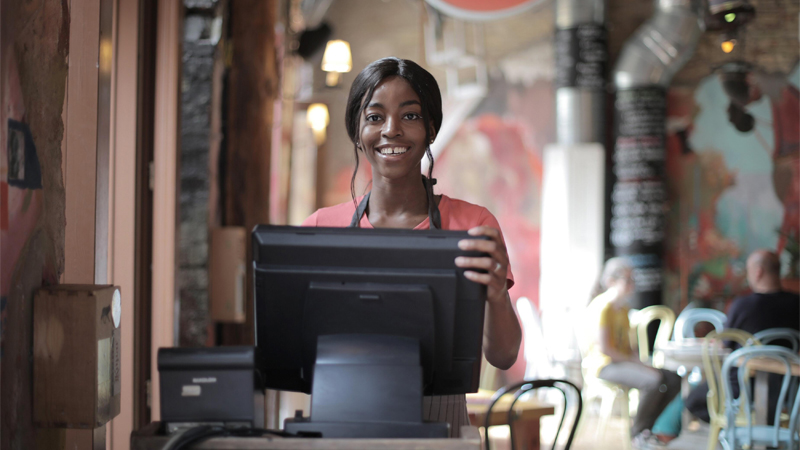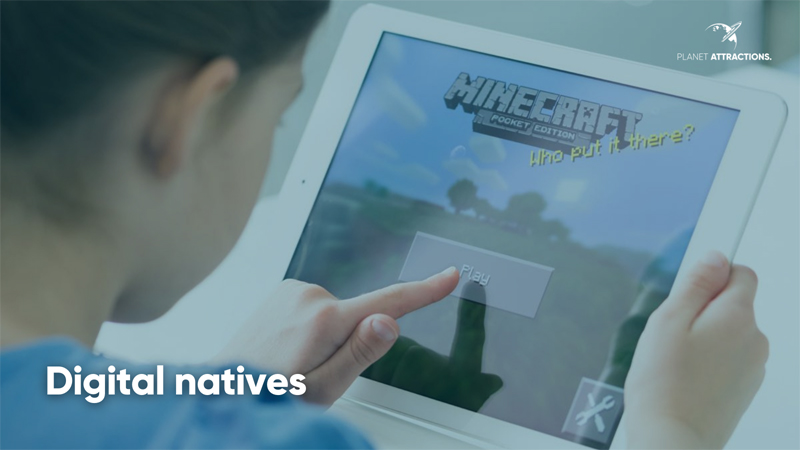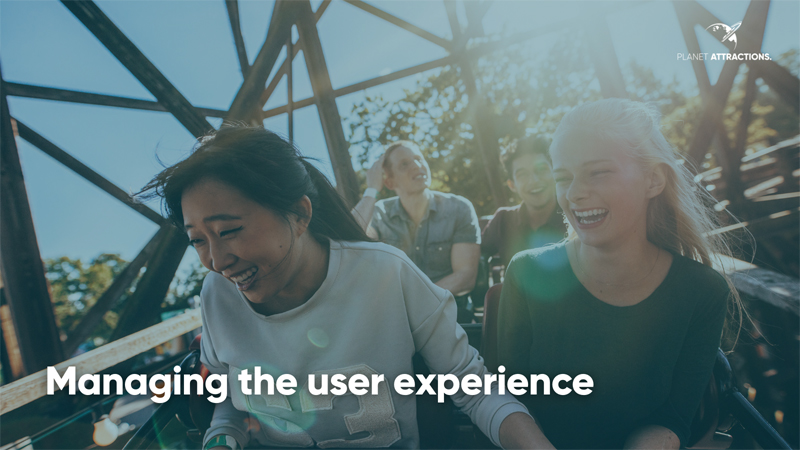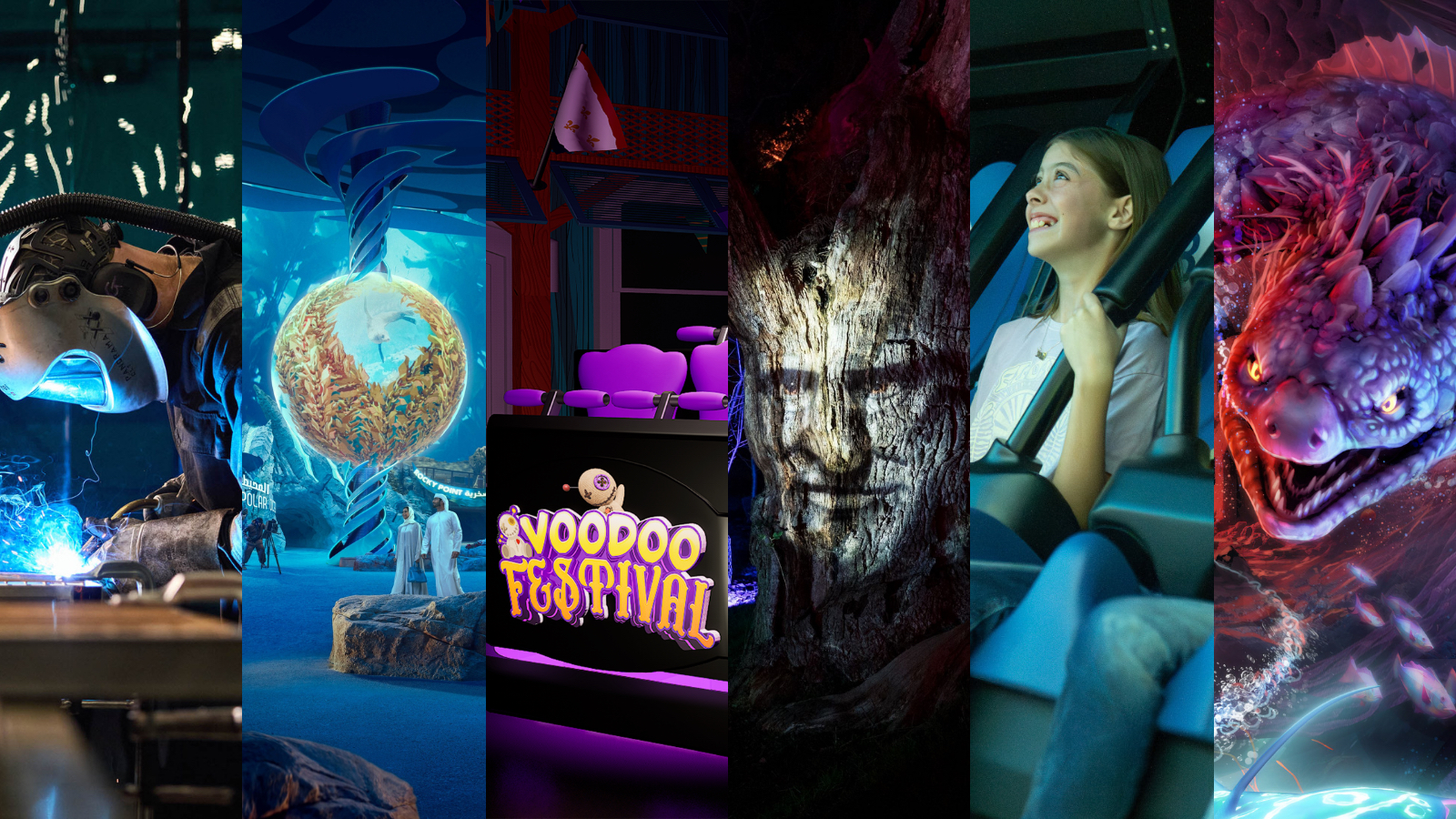|
How do you develop a POS system that caters to both digital natives and the generation before them? Convious’s Miendu Dang has the answers

Tom Anstey | Planet Attractions | 18 May 2022

 Convious has developed its POS system with both the millennial and Gen Z user in mind Credit: Convious Convious has developed its POS system with both the millennial and Gen Z user in mind Credit: Convious
When it comes to making an attraction run smoothly, an effective Point of Sale (POS) system is key.
Managing everything from operations to marketing, traditional or older POS systems all have similar issues.
From a limited capacity of users - with those users having to be heavily trained to use the system - to hardware that’s difficult to update and can only run on legacy systems, attractions were, and in some cases still are, operating on outdated technology that doesn’t stand up when it comes to the current generation of users.
Expectations from the modern user - often one born into a world that expects most things to be useable at the click of a few buttons - have evolved rapidly over the last two decades. That’s where Convious has come in with its own solution.
Working with more than 100 major attractions worldwide, Convious is known for creating software designed to improve the visitor experience through the development of efficient and easy-to-use interfaces.
One of its newest additions is its POS system, which has been developed with the millennial and Gen Z user in mind.
“What makes the difference for our product is how user friendly it is,” says Miendu Dang, POS product manager at Convious.
“If you look at our competition, a lot of times you see that they need three or four months' worth of implementation training. They make it rocket science but at the end of the day, I think that's where we differ.
It shouldn’t be rocket science. The POS is a tool you can use simply and effectively. There is a big generation gap in terms of technique and application, and I think that's the difference.”

The generation gap effectively divides between those who have had to adapt to the new language of technology and those who are digital natives - people who grew up in the era of ubiquitous technology, including computers and the internet.
“I’m from a generation that didn't have everything online and didn't have really good coding,” says Dang.
“The next generation - our kids - grew up with coding being an everyday thing, as well as apps and smartphones. That’s the gap I’m talking about in terms of technology.”
Highlighting an example, Dang points to a videogame such as Minecraft to understand the mindset of the digital native.
“For that first group, you have to explain how things like Windows and Microsoft DOS worked,” he says. “That generation doesn’t use these tools intuitively because, in their daily life, they weren’t using those things.
“Our children of course do use that. My son downloads Minecraft. Nobody has to explain it to him and he can use it straight away. He can play at a very high level, that’s what this gap is.”
When delivering a new POS system, Convious had to create something that would be a simple and easily accessible solution for both the digital native and the generation that came before them.
The sales process, says Dang, is the best example: “Most of our clients are buyers who have already worked with a system they’ve used for more than ten years. If they get a new POS, they're calculating not only what the tool can do for them, but also the implementation and training. As a result, they might say, 'this will take too long, so we're not going to do it'.
“When it comes to the approach, you should be thinking 'when was the last time that you downloaded an app on your phone and called that company to explain how it worked?' If I told my kids that I would have to teach them how to use Minecraft, I think they would laugh in my face.
“If the system is easy-to-use and intuitive, it works on all levels - from generation to generation.”

Of course, the adoption of such technology took a huge upswing as a result of the pandemic. Faced with remote work and losing the ability to do certain things in-person, technology that could be used by anyone, anywhere became a necessity in everyday working life.
“That mindset has sped up big time,” says Dang. “Because of the pandemic, old fashioned was not the way to go anymore and it affected how we as a society work.
“There's an expectation now for working online and remotely, that whole process has been accelerated as a result. That’s an approach we also take when we develop our tools for customers.”
According to Dang, because of the pandemic, especially in the early stages when most people were confined to their homes, businesses had to rethink how tasks could be completed remotely.
“You're forcing yourself to think about things like, ‘what if I'm not physically there?’ If you don't think about things like that, then it’s difficult for your company to move forward in these challenging times,” he says.
“You have to think if a POS isn't working, what can they do without me stepping onto a plane to go to them and help them fix it? Pre-pandemic, that was the kind of scenario you didn’t really consider. It forced everybody to think, ‘what if we can't reach out to each other physically?’”

Another important element of POS is data collection. Based on data collected by a POS system, attractions can adjust operations accordingly and integrate POS with the rest of their management tools. With older systems, this can sometimes prove to be a challenge, with online and offline sales not always integrated.
“Sometimes online ticket sales might account for 80% of capacity, other times 20%. If that system isn’t connected with physical purchases, then it becomes a big problem because it becomes a guessing game,” says Dang.
“When it's connected through online POS and offline POS, it’s a big thing in understanding park capacity and linked sales.
“As an example, if you're selling a huge number of tickets online - say 9,000 tickets with an overall capacity of 10,000 people - you can take note that there will be big lines and adapt your crowd management strategy accordingly. That's very important for both the customer so they have a good day and for management so they can run the attraction smoothly.
“By contrast, if you don’t expect to reach park capacity - say 5,000 tickets sold out of 10,000 people - you can manage things like staff levels and food orders.”
Dang adds that offline and online sales can no longer be seen as separate entities, which is a challenge for some still using older systems, something not lost on today’s tech-savvy users.
“If you told our parents about online and offline sales, they would find it more difficult to grasp,” he says. “If you tell that to the current generation - the difference between online and offline sales - they would say, ‘what's the difference?’”

When attractions reopened during the height of the pandemic, they did so under strict capacity restrictions. Smaller maximum attendance meant budgets had to be tightened, introducing another challenge for operators. Data collected from POS can help in part to manage this effectively, in turn giving the customer a better day out.
“The pandemic has shown that smaller capacities have to be managed,” says Dang. “I think before that, we didn't realise or appreciate that as much.
“You could throw €10,000 in and get €20,000 or €15,000 in returns, and you wouldn’t care because the output is more than the input. But nowadays management can be more efficient. If we know through the POS that output will be €20,000, we now look at how we can lower that cost.
“Understanding capacity can also help both your staff and your visitors. If you as a visitor are standing in line at a park with 400 people, you're probably irritated. Better management of this means you can see when it is or isn’t crowded and you can choose to avoid long lines.”
When combining both the online and offline statistics, this kind of big data makes a huge difference in successful operations.
“The management of the whole park, online and offline, makes a big difference now,” says Dang. “Data collected from POS is the basis of that.”

All of these things were taken into account when it came to the development of the Point of Sales solution from Convious.
Acting as an all-in-one product, the tool has one interface for all users, is easy to use and feedback centred, and can handle multiple operations simultaneously in real-time. This extends to customer relationship management, employee management, discounts, food and beverage, retail and merchandising, and hospitality.
“We can, in theory, do technically everything because everything operates through one system,” explains Dang.
“For example, a lot of parks have big lines because they can't have a self-service kiosk because it doesn't give data to your online environment. If it's not connected, you can't do it because you don't have full control of your capacity anymore. We can offer that.
“Also, because our POS is integrated with other parts of the venue, we have data that helps us to offer the visitor the right thing at the right moment.
“That data is also missing for a lot of companies because they aren’t using a single system like ours. If 100 people buy online and 100 people buy at the gate but the online guys all eat some french fries with mayonnaise and the offline people don't eat anything, that's interesting given data.
“All the departments next to selling tickets can benefit from this big data. That's something not a lot of attractions realise. It has untapped potential.”
Through this all-encompassing approach, data collected is fed down through the operations chain, helping each individual department to understand their task for the day.
“It's way bigger than we are talking about right now,” says Dang. “For example, if the bakery in Disneyland knows that because we sold 100 tickets today, we're going to sell an estimated 200 burgers, it's good information. You have less waste, it's already prepared for the people that are going to buy those burgers. The system can go further than just sales and attractions should realise that POS data is the missing link at the moment.”
Suppliers
|
|






Supplier Showcase 2025: The biggest attractions projects landing worldwide this year
|